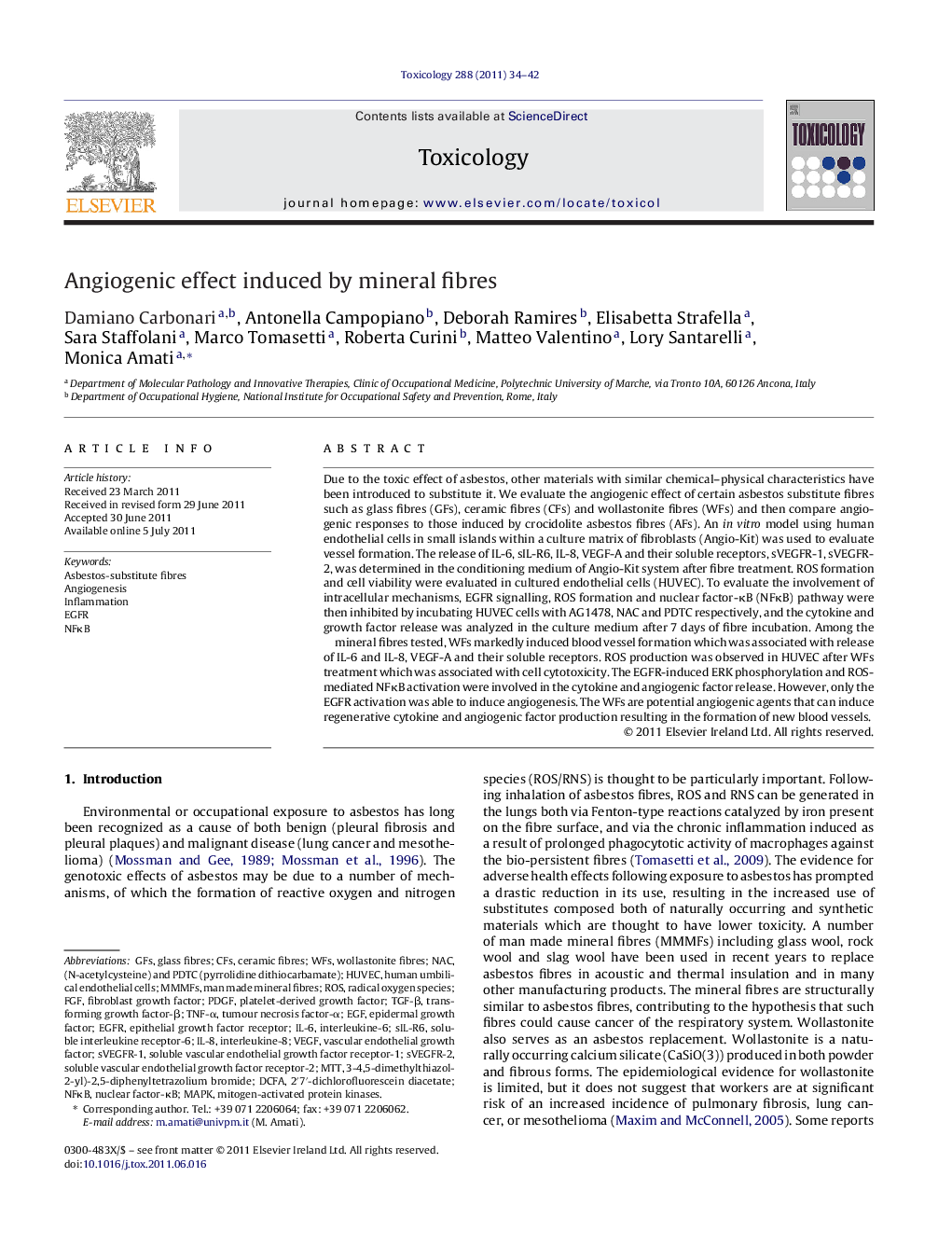| Article ID | Journal | Published Year | Pages | File Type |
|---|---|---|---|---|
| 5859657 | Toxicology | 2011 | 9 Pages |
Due to the toxic effect of asbestos, other materials with similar chemical-physical characteristics have been introduced to substitute it. We evaluate the angiogenic effect of certain asbestos substitute fibres such as glass fibres (GFs), ceramic fibres (CFs) and wollastonite fibres (WFs) and then compare angiogenic responses to those induced by crocidolite asbestos fibres (AFs). An in vitro model using human endothelial cells in small islands within a culture matrix of fibroblasts (Angio-Kit) was used to evaluate vessel formation. The release of IL-6, sIL-R6, IL-8, VEGF-A and their soluble receptors, sVEGFR-1, sVEGFR-2, was determined in the conditioning medium of Angio-Kit system after fibre treatment. ROS formation and cell viability were evaluated in cultured endothelial cells (HUVEC). To evaluate the involvement of intracellular mechanisms, EGFR signalling, ROS formation and nuclear factor-κB (NFκB) pathway were then inhibited by incubating HUVEC cells with AG1478, NAC and PDTC respectively, and the cytokine and growth factor release was analyzed in the culture medium after 7 days of fibre incubation. Among the mineral fibres tested, WFs markedly induced blood vessel formation which was associated with release of IL-6 and IL-8, VEGF-A and their soluble receptors. ROS production was observed in HUVEC after WFs treatment which was associated with cell cytotoxicity. The EGFR-induced ERK phosphorylation and ROS-mediated NFκB activation were involved in the cytokine and angiogenic factor release. However, only the EGFR activation was able to induce angiogenesis. The WFs are potential angiogenic agents that can induce regenerative cytokine and angiogenic factor production resulting in the formation of new blood vessels.
Graphical abstractDownload full-size imageHighlights⺠In this study we described the angiogenetic effect of some mineral fibres. ⺠Wollastonite fibres induce blood vessel formation. ⺠The size and shape of the fibres were important factors for the cell signalling. ⺠Wollastonite induce ROS-NFκB activation and EGFR signalling. ⺠Involvement of wollastonite exposure in the development of pathological conditions.
